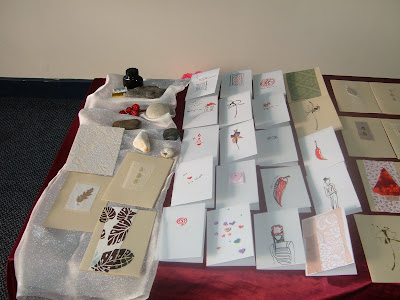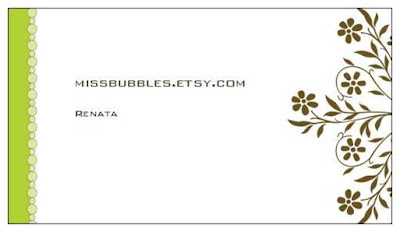
photo from missbubbles card collection
Every artisan out there has thought about or participated in an arts and crafts fair at some time. There are countless stories about the wildly successful fairs, and the others that were a dismal failure. This first in a series on fairs focuses on two questions: should you participate in a fair and what fair should it be?
Why should you participate in a fair?
If I were to ask 100 artisans the number one reason they would participate in a fair, 95% would respond with one of two answers: to make money and to increase exposure. While both of these answers are valid, I believe the number one reason to participate in a fair is for feedback. There are many ways to make money and many ways to increase your exposure in the marketplace. There are very few venues that provide the direct contact with potential customers like a fair or show. We don’t often see who does or does not buy our items in a retail venue. We never see the customer in the internet environment. The person who does not buy your item, and the reason why, is just as important as the person who does.
At a fair or show, you can chat with people, as well as watch them. What item is picked up most often in your booth? Do they put it down after looking at the price tag? Do they ask for your business card? Do they keep coming back? People love to chat with vendors. Chat them up! Listen to what they say to others while at your booth or table. Listen, truly listen, to the feedback. Making money at a fair for one day, or two days, is wonderful. Having a marketable item that people will keep coming back for is gold.
Fairs and shows are a venue. Just like your website, or Etsy, they should be one part of your marketing pie. Most of us can’t quit our day jobs to follow our passion by selling on one venue. Relying on fairs to support your business is a very time-consuming job but they can be an important piece of the overall picture.
What fair should you participate in?
Okay, you are sold. You want to do a fair! With the plethora of fairs out there, how do you decide which one to do? The great thing about a fair is that it brings together lots of people. You want to make sure they are the right people for you. The first step, if you have not done so already, is to determine your target market. Don’t skip this step. Most fairs attract certain markets through advertising, word of mouth, all the way down to the types and prices of items at the fair. Do you make hip, funky, lower priced items? Street fairs may serve you well. Paying up to participate in a show with big-ticket items won’t. If you make expensive items, street fairs where people are looking to buy items under $10 will not net you many sales.
If you can, visit the fair before you sign up. Look at the booths, the items, AND the people browsing. How many are buying? What booths seem to be selling the most? Are these items in line with yours, in terms of target market? Are there too many items like yours? Or no items like yours? If you can not visit the fair, try to get a list of previous vendors. Ask the same questions as you peruse their websites. Try to email some if you can. The best question to ask: would you do this fair again? Why or why not? Returning vendors are the bread and butter for most show promoters. If they have to recruit a whole new group every time, it is not a successful show.
If your item is clearly a unique artisan item, you may want to avoid fairs where resellers participate. These fairs often attract buyers looking for a deal. If you make unique handmade purses, it is very hard to compete with the guy next to you selling mass-manufactured bags from the wholesale district of your local city. Check the rules for the fair. If everything must be made by the seller, you are safe. If it does not state this, ask the fair promoter.
Many shows are juried. In a juried show, photos and descriptions of your items are judged by a group of artisans for entrance into a show. These shows normally limit the number of vendors in a particular area to prevent too much competition in one area. The more well known the juried show, the more highly elevated your item becomes in the eyes of the buyer. For instance, entrance into the Sugarloaf Crafts Festivals in the US is highly competitive. These shows can be very lucrative. In addition, these shows help to build a “resume” for your art. Participation in these shows can be used on your websites and marketing materials, thus lifting your profile. Usually, the best, most competitive shows do the best advertising.
Other artisans are some of the best resources for good shows. Don’t be afraid to ask someone where they participate. Take time during this show season to browse through as many fairs as you can. Stop and chat with the vendors. Most of us love to talk about our art. Ask them about the fairs they participate in.
Art fairs and shows can be very costly and time-consuming. Taking the time to check them out before hand, asking questions, and matching them to your target market can save money, time, and many headaches! In the end, you must decide which ones work best for your art or craft.
For the next two installments:
What you need to know for an organised artisan fair
How to Create Your Own Show
Written by: Beth Rowan
Third Floor Designs
http://thirdfloor.etsy.com/







